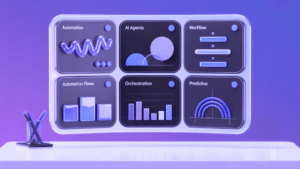The public relations landscape has undergone a drastic transformation. While traditional PR built its reputation on press releases and media relationships, digital PR has emerged as the dominant force, offering real-time responses, measurable results, and superior ROI. This shift isn’t just about new tools—it’s about fundamentally different approaches to reaching and engaging audiences in an increasingly digital world.
The Great PR Transformation
The PR industry has fundamentally shifted in 2025, with search interest in online public relations surging significantly since 2020. For PR managers and communications directors, understanding when and how to leverage digital versus traditional approaches can make or break your annual strategy.
This transformation reflects broader changes in how audiences consume information and engage with brands. As demonstrated by M2 Communications’ successful campaign for MSD Philippines, modern public relations has become the cornerstone of communication strategies, with businesses increasingly prioritizing data-driven, digital-first approaches that deliver measurable results.
5 Game-Changing Digital PR Advantages
1. Real-Time Response vs Weeks of Lead Time
Digital PR teams respond to trending topics and crises within minutes, while traditional PR operates on publication schedules requiring weeks or months of lead time. During a social media crisis, digital PR can deploy response strategies across platforms within hours.
The speed advantage is crucial in today’s fast-paced digital environment. As noted by CXO Inc Magazine, real-time monitoring and response capabilities are now hallmark strengths of digital PR, enabling brands to address issues before they escalate.
2. Granular Analytics vs Guesswork
Digital PR provides detailed metrics including website traffic, backlinks, social engagement, and conversion rates. Traditional PR still relies on outdated methods like Advertising Value Equivalency (AVE), with many PR professionals struggling to align metrics to business KPIs.
Modern digital PR platforms offer sophisticated analytics that tie directly to business outcomes. Unlike traditional PR’s reliance on circulation numbers and estimated reach, digital PR can track actual engagement, click-through rates, and conversion metrics that matter to business leaders.
3. Superior Cost-Effectiveness
In the Philippines, the cost advantage of digital PR becomes even more pronounced:
- Digital PR: PHP 15,000-50,000/month for SEO-focused campaigns with clear ROI tracking
- Traditional PR: PHP 50,000-250,000/month for established agency retainers with additional costs
- ROI comparison: Digital PR campaigns show ROAS improvements of 30-50% with leads increasing by 25-60%, while traditional PR relies on indirect influence metrics
According to M2 Communications’ analysis on maximizing digital marketing ROI, digital PR consistently outperforms traditional PR in terms of measurable returns on investment. This dramatic difference is particularly relevant for Filipino brands, where digital PR offers transparent ROI calculation through real-time tracking of sales, conversions, and lead costs, with AOK Marketing’s research providing additional validation of these findings.
4. Massive SEO Benefits Through Digital PR
Digital PR campaigns generate 40-60 quality backlinks per quarter from authoritative publications, directly boosting search rankings. Traditional methods provide minimal SEO impact since most coverage doesn’t include backlinks.
Pure SEO Philippines emphasizes that backlinks from digital PR campaigns are among the most valuable SEO assets, contributing significantly to domain authority and search visibility. This makes digital PR an essential component of any comprehensive marketing strategy.
5. AI-Powered Efficiency
Most PR professionals now use generative AI for automated media monitoring, predictive analytics, personalized outreach, and real-time crisis detection. Traditional PR has been slower to adopt these game-changing technologies.
The integration of AI in PR workflows represents a fundamental shift in how PR professionals work. Studies show that 64-80% of PR professionals are exploring or using AI tools, with M2 Communications’ comprehensive guide to AI tools for public relations confirming that AI tools are now essential for competitive advantage in media monitoring, content creation, and audience analysis.
Where Traditional PR Still Wins
Traditional PR maintains significant advantages in specific areas:
- Credibility and authority through established media relationships
- Broad reach via mass media channels
- Crisis communication for major corporate incidents requiring authoritative responses
As highlighted in the PRSA’s (Public Relations Society of America) code of ethics, traditional PR remains essential for building long-term credibility and managing large-scale reputation challenges. The trust factor associated with established media outlets continues to be a valuable asset—particularly for B2B companies and during major corporate crises—where leveraging third-party credibility provides essential audience reassurance.
The Winning Strategy for 2025
The most successful brands don’t choose between digital and traditional PR—they integrate both strategically:
Optimal Budget Allocation:
Most modern brands now allocate the majority of their PR budgets to digital channels for their agility and measurable outcomes, while maintaining a meaningful share for traditional PR to ensure credibility and broad reach. Industry guidance generally recommends a primary investment in digital PR and a supporting allocation for traditional PR to maximize both impact and trust.
This allocation reflects the reality that digital PR delivers more measurable business outcomes while traditional PR provides essential credibility support. M2 Communications’ comprehensive service approach emphasizes that the most effective PR strategies in 2025 combine digital agility with traditional authority, helping brands tell meaningful data-driven narratives across multiple channels.
Key Implementation Steps:
- Invest primarily in digital PR infrastructure and AI tools for enhanced efficiency
- Maintain selective traditional PR relationships for credibility and authority building
- Focus on business outcomes rather than vanity metrics through data-driven analytics
- Build relationships with both traditional journalists and digital influencers
Quick Decision Framework
Choose Digital PR when you need:
- Immediate response capability
- Measurable ROI and detailed analytics
- SEO benefits and backlink generation
- Cost-effective audience targeting
- Crisis management and real-time monitoring
Choose Traditional PR when you need:
- Broad credibility and authority
- Mass market reach
- Established media relationships
- Corporate crisis communication
The Bottom Line
Modern online strategies aren’t just the future—they’re the present standard. With superior measurement, faster response times, and better ROI, contemporary approaches should form the foundation of your 2025 strategy. However, traditional methods still play a valuable supporting role in building credibility and authority.
The winners in 2025 will be brands that master the art of integration, using modern online approaches for agility and measurement while leveraging traditional methods for credibility when it matters most. Leading agencies emphasize that integration is the key to PR strategy in 2025. Brands that blend online agility with traditional credibility consistently outperform those using either approach alone.
Frequently Asked Questions
Q: Is traditional PR dead in 2025?
A: Traditional PR is not dead—its role has evolved. It remains valuable for building credibility and achieving broad audience reach, particularly via established media relationships and trust with legacy outlets. However, the industry consensus is that traditional PR now complements digital strategies rather than standing alone. Modern PR strategies prioritize digital channels for measurement, agility, and ROI, utilizing traditional PR when credibility and authority are paramount.
Q: How much should I budget for digital PR vs traditional PR?
A: Digital PR: Major industry guides confirm suggested monthly budgets of PHP 15,000-50,000 for digital PR services. Traditional PR: Monthly retainers for traditional PR often range from PHP 50,000-250,000 for comprehensive campaigns. Allocation guidance: A majority budget allocation to digital PR with a supporting allocation to traditional PR reflects current trends, but actual splits should be tailored to specific business goals, sector, and campaign needs.
Q: Can digital PR handle crisis management alone?
A: Digital PR is excellent for rapid monitoring, immediate response, and real-time engagement during crises. Traditional PR remains essential for authoritative, controlled communication when reputation is at highest risk—especially for major incidents or when engaging legacy media and large stakeholder groups. The optimal approach is integrated, leveraging the speed and analytics of digital PR with the credibility of traditional PR for comprehensive reputation protection.
Q: Which is better for SEO – digital PR or traditional PR?
A: Digital PR is significantly better for SEO, particularly in generating high-quality backlinks from news and relevant industry sources. Quality digital PR campaigns routinely deliver dozens of authoritative backlinks per quarter—a critical driver for improved search visibility and domain authority. Traditional PR delivers less direct SEO value, as most coverage does not include followed backlinks. Leading SEO and PR agencies agree that digital PR is essential for a modern SEO strategy.
Q: Should startups focus on digital PR or traditional PR?
A: Startups should prioritize digital PR due to cost-effectiveness, better measurement capabilities, and faster results. Add traditional PR later for credibility once digital foundations are established.
Transform your PR strategy with measurable digital PR that actually drives results. Media Meter’s real-time monitoring and analytics help you track ROI, generate quality backlinks, and respond to opportunities instantly. Contact us for inquiries or view our sample media reports to discover how we can boost your brand’s online authority





